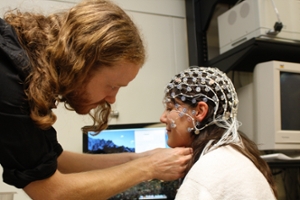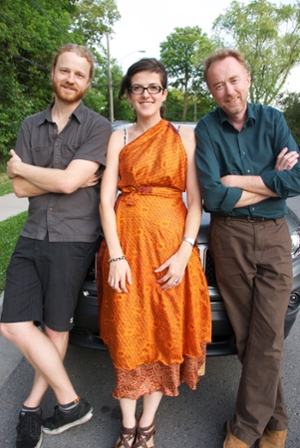
We are very proud of our ‘EEJeep’ – a fully equipped Jeep, which we use to go out on the road visiting patients and families in their homes, care homes, and hospitals. Aside from a patient’s proximity to our scanning facilities, several other factors may limit our ability to conduct an fMRI exam on any particular patient; for example, if the patient has some kinds of metal surgical implants, is unable to lay completely horizontal in the scanner, or is known to have certain types of seizures and/or spasms. In every case, we work closely with families to tailor our imaging methods to each patient’s individual needs. We aim to strike an ideal balance between using convenient imaging methods and acquiring the most accurate information possible, all while maintaining the highest standards of patient safety.

We aim to gain a better understanding of residual brain function in people who have impaired consciousness after sustaining a severe brain injury. Residual brain function means a patient’s ability to process language, visual information, or other stimuli. We seek to get a better understanding of the different degrees of consciousness by probing the presence of self-awareness, awareness of others, or awareness of the environment. We also aim to understand the specific brain damage that is causing the loss of consciousness in these patients. Unlike other neurological conditions that are associated with specific patterns of neural degeneration (such as Parkinson’s disease or Alzheimer’s disease) disorders of consciousness are caused by many different types of injury and little is known about the key brain areas that are responsible for these deficits. Understanding how the brain functions after severe injury will help us to improve the accuracy of diagnosis and to estimate prognosis (the likelihood of recovery) more precisely. For example, we know that vegetative patients who show brain responses in certain brain scan tasks are more likely to improve than those who fail to show any response. We are pursuing this further and trying to define clear functional and structural factors that can help us to understand whether a particular patient will recover or remain in a vegetative state permanently.

Electroencephalography (EEG) is a technique that uses sensors placed on the scalp to measure brain activity. Each sensor measures changes in the brain’s electrical activity in response to a variety of stimuli, including verbal instructions (e.g. “imagine clenching your fist”, “imaging kicking a ball”, etc.), and passive stimuli, such as listening to sounds and words without being asked to do anything. EEG is widely used in clinical applications; however, the systems that we use are research-dedicated with a different set-up and tests (The Lancet 2011, PLOS One 2012). While neither setup is commercially available, our 4-channel EEG system is more readily available and is a first step to a portable system that would potentially allow some of these patients to communicate in the future.

Ideally, we like to try both methods in all of our patients. However, in practical terms, this may not always be feasible. fMRI, for example, requires patients and families to travel to London, Ontario for the scanning sessions. MRI scanners are not portable; furthermore, not all MRI scanners are set up for the research that we do and each facility needs to go through a strict Research Ethics process. As we work at Western University, that is where our protocols are approved and that is where we have our experimental setup ready for our research. EEG equipment, on the other hand, is portable, and we’ll typically visit the patient at their home or local care facility to do this type of assessment.

(Damian Cruse, Davinia Fernandez-Espejo, Adrian Owen)